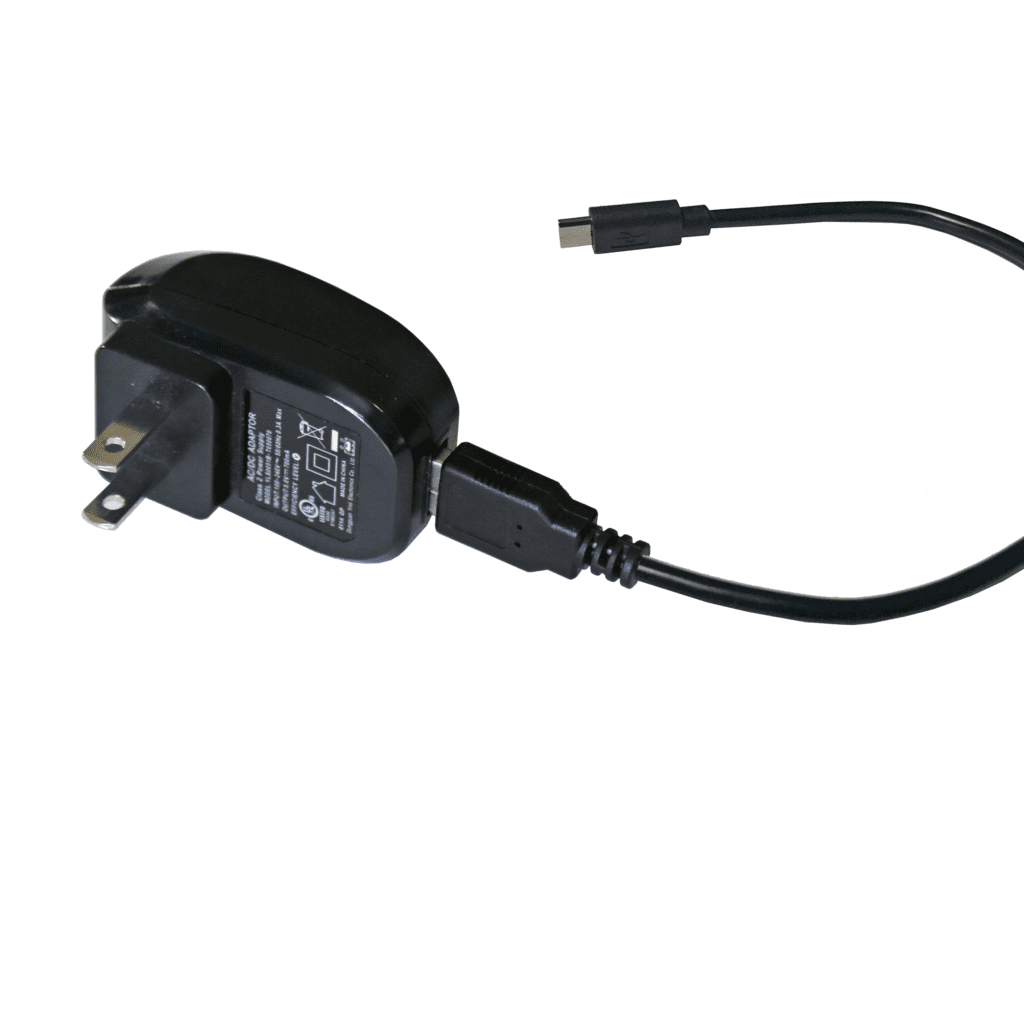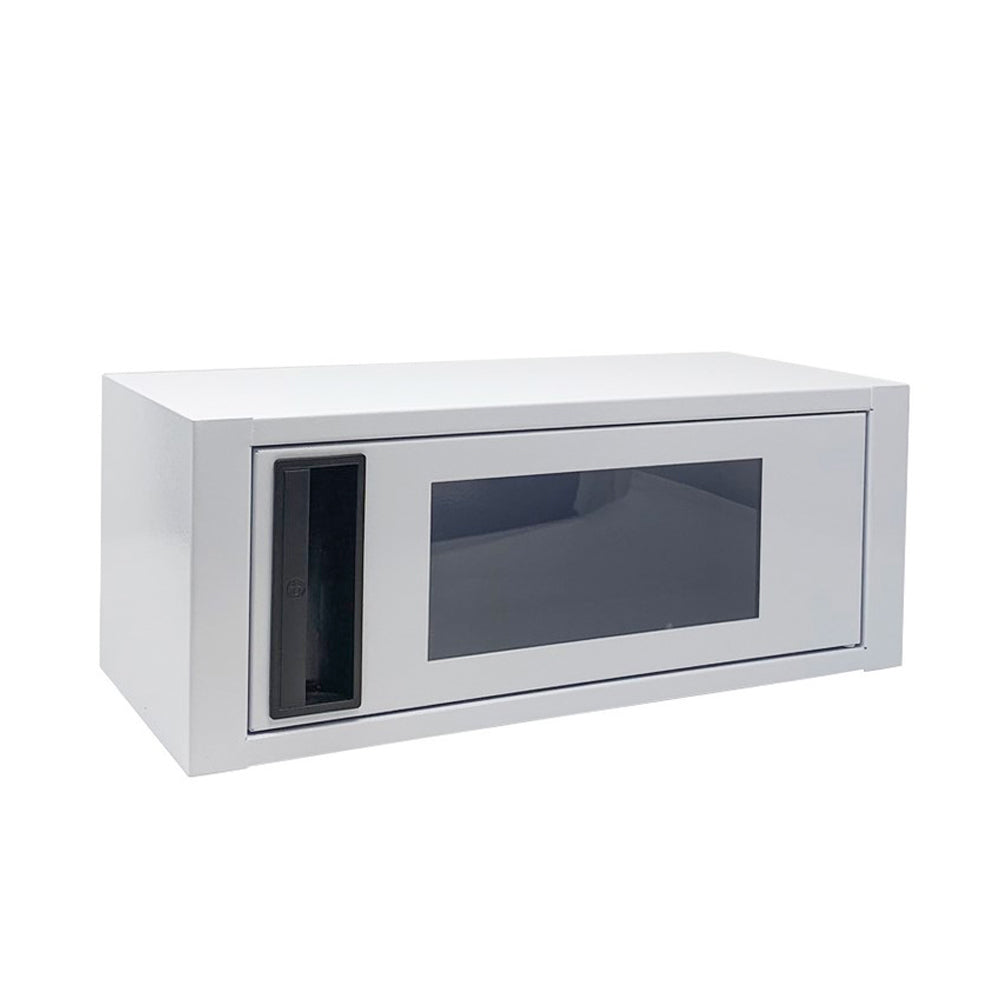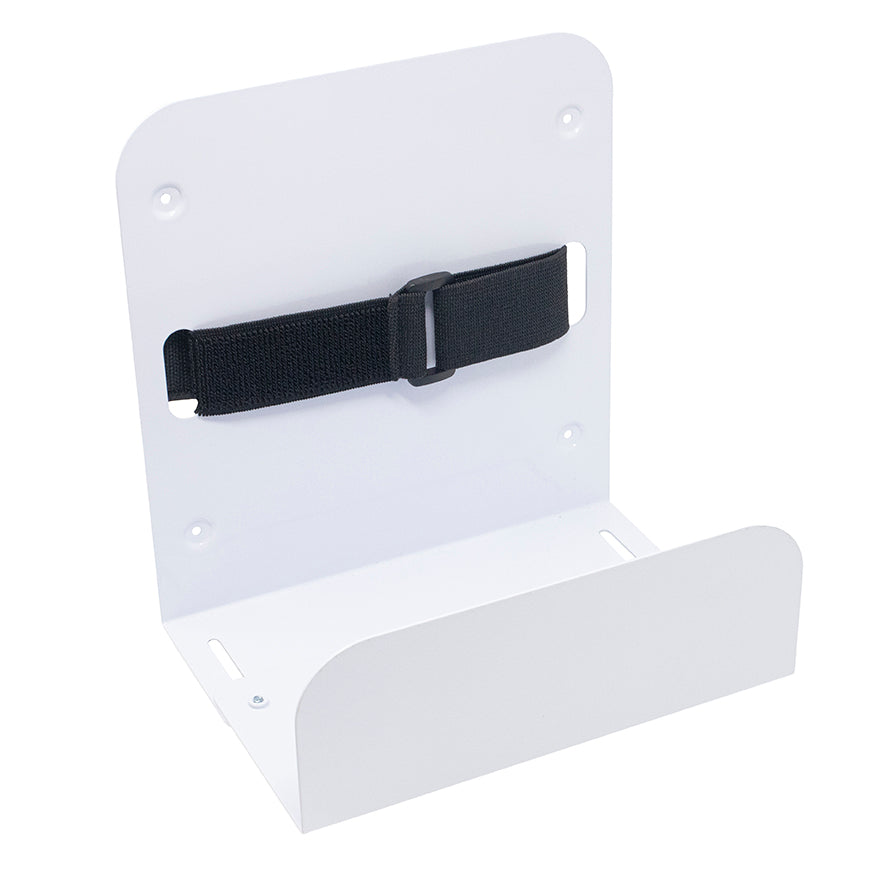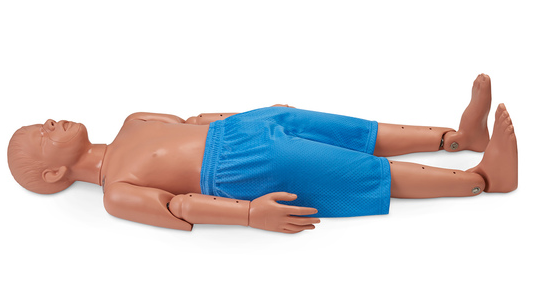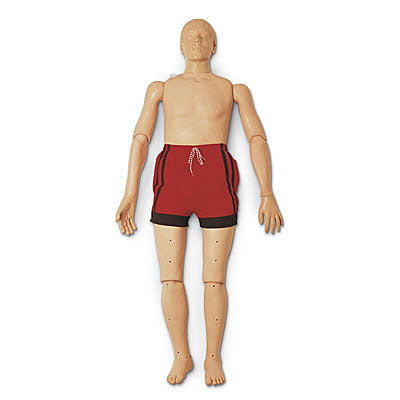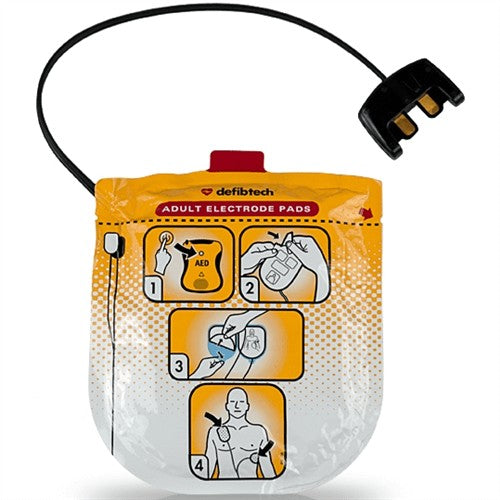Frequently Asked Questions
What is Sudden Cardiac Arrest?
Sudden cardiac arrest (SCA) simply means that the heart unexpectedly & abruptly quits beating. This is usually caused by an abnormal heart rhythm called ventricular fibrillation (VF).
Is SCA the same as a heart attack?
No. A heart attack is a condition in which the blood supply to the heart muscle is suddenly blocked, resulting in the death of the heart muscle. Heart attack victims usually (but not always) experience chest pain and usually remain conscious. Heart attacks are serious and sometimes will lead to SCA. However, SCA may occur independently from a heart attack and without warning signs. SCA results in death if not treated immediately.
Who is at risk for SCA?
While the average age of SCA victims is about 65, SCA is unpredictable and can strike anyone, anywhere, anytime.
What is VF?
VF is an abnormal heart rhythm often seen in SCA. This rhythm is caused by an abnormal and very fast electrical activity in the heart. VF is chaotic and unorganized; the heart just quivers and cannot effectively pump blood. VF will be short lived and deteriorate to asystole (a flat line) if not treated promptly.
How is VF treated?
The only effective treatment for VF is an electrical shock called defibrillation. Defibrillation is an electrical current applied to the chest. The electrical current passes through the heart with the goal of stopping the VF and giving an opportunity for the heart's normal electrical system to take control. This current helps the heart reorganize the electrical activity so it can pump blood again. An automated external defibrillator (AED) can defibrillate the heart.
What is an AED?
An AED is a device that analyzes and looks for shockable heart rhythms, advises the rescuer of the need for defibrillation and delivers a shock if needed.
Will I hurt the victim by using an AED?
When used on people who are unresponsive and not breathing, the AED is extremely safe. The AED makes shock delivery decisions based upon the victim's heart rhythm, and will only defibrillate a shockable rhythm.
What if I forget the steps for using an AED?
The steps for shocking an SCA victim are simple and straightforward. The AED Plus® provides visual and audio prompts required for the entire resuscitation process. The most difficult part is recognizing the need for defibrillation.
Should I perform CPR first or apply electrode pads from the AED?
Do CPR only until the AED arrives. Apply the electrode pads to the victim's bare chest and follow the voice prompts and messages of the AED. It will tell you when to resume CPR.
If defibrillation is so important, why should I do CPR?
CPR provides some circulation of oxygen rich blood to the victim's heart and brain. This circulation delays both brain death and the death of heart muscle. CPR also makes the heart more likely to respond to defibrillation.
Can I be sued using an AED?
To date there has never been a case where someone was held liable for using an AED, but as you know, anyone can be sued. Likewise, most states have passed “Good Samaritan” legislation protecting the lay rescuer from lawsuits.
Can I accidentally shock another rescuer or myself?
AEDs are extremely safe when used properly. The electric shock is programmed to go from one electrode pad to another through the victim's chest. Basic precautions, such a verbally warning others to stand clear and visually checking the area before and during the shock, will virtually ensure the safety of rescuers.
What if the victim has a medication patch on or EKG electrodes on the chest where I want to place the electrode pads?
Never place AED electrode pads directly on top of medication patches, such as nitroglycerin, or EKG patches. Patches should always be removed and the skin wiped dry before placing electrode pads on the skin.
Do I need to remove the electrode pads before performing CPR?
No. The electrode pads remain on throughout the resuscitation and until the victim is transferred to advanced care providers such as the paramedics. If the electrode pads are in their correct locations on the victim's chest, they will not interfere with proper hand placement or compressions.
No. The electrode pads remain on throughout the resuscitation and until the victim is transferred to advanced care providers such as the paramedics. If the electrode pads are in their correct locations on the victim's chest, they will not interfere with proper hand placement or compressions.
Should I use the AED if the victim has a pacemaker or is pregnant?
Yes, never withhold AED use in a person with SCA.
Can I defibrillate on a wet surface?
Yes, as long as the usual safety rules are observed. Be sure the victim's chest is wiped dry. Keep the electrode pads away from a damp or conductive surface.
Can I defibrillate on or near a metal surface?
Yes, as long as the usual safety rules are observed. Keep the electrode pads away from contact with the conductive surface. Be sure not to allow anyone to touch the victim when a shock is delivered.
How much of the victim's clothing should be removed to carry out defibrillation?
The chest should be exposed to allow placement of the disposable electrode pads. A woman's bra should be removed. Clothes may need to be cut off.
Why is it so important to be sure that the electrode pads are firmly adhered to a clean, dry chest?
Successful defibrillation requires electricity to flow from one electrode pad to the other through the chest. If the electrode pads are not firmly adhered and there is sweat or another conductive material between the electrode pads, the electricity will be more likely to flow across the chest rather than through it. This will result in ineffective defibrillation and an increased chance of sparks and fire.
Is it okay to place the electrode pads directly on a hairy chest?
Electrode pads must come in direct contact with the skin. If the chest hair is so excessive as to prevent good adhesion of the electrode pad, the hair must be removed quickly.
What if I have a child victim?
You should use pediatric electrode pads, which carry a lower charge to the child in SCA.
After I have successfully defibrillated the victim, do I keep the electrode pads on?
Yes, even after a victim has been successfully defibrillated, he/she is at risk of developing VF again. The AED will continually monitor the victim for the return of VF. If VF is suspected, the AED will automatically begin to analyze victim after two minutes of CPR is complete. The AED should be left on until emergency personnel assume responsibility for the victim.
What if the victim regains a pulse but is not breathing or is breathing slowly?
You should give rescue breaths at a rate of 1 every 5 seconds or 12 per minute.
I used an AED on a SCA victim and the AED always prompted “No Shock Advised”. Even with CPR the victim did not survive. Why didn't the AED shock this victim?
Although VF is the most common rhythm in cardiac arrest, it is not the only one. The AED will only shock VF or VT (ventricular tachycardia), which is a very weak but fast heart rhythm. There are other heart rhythms associated with SCA that are not treated with defibrillation shocks. A “no shock advised” message doesn't mean the victim's heart rhythm is back to normal.
I shocked a woman in SCA within minutes after she collapsed. I hear later that she did not survive. Did I do something wrong?
Unfortunately, because of other underlying medical or heart problems, not all victims of SCA who are in VF will survive even if defibrillation is done promptly & correctly.
What if I don't perform all the steps of CPR and defibrillation perfectly?
SCA is a high stress situation. Even experienced health care providers do not do everything perfectly. In SCA, performing CPR and using an AED can only help the victim.
What if I'm not certain whether or not I need to use an AED?
Remember this rule: only use an AED on someone you would do CPR on – unresponsive and not breathing.
How do I Monitor my AED?
Whether you are managing a large organization with hundreds of AEDs, or a small office at home with a single AED, tracking and maintenance keeps your AED(s) Ready to Rescue.
With AED4Life and TrackMyAED, it is as easy as 1-2-3.
How can TrackMyAED Plus keep my AEDs Ready to Rescue?
Our easy to manage, web-based monitoring system provides you with up-to-date, real time status of all your AEDs. Tracking monthly inspections and keeping you informed of any expiration of Pads and Batteries. In addition, the system will track and manage the training status of your trained staff.
Getting your AED(s) into the system is quick and easy. Once your AED is entered, users have the ability to add and edit all data, view important AED information, track trained staff and download detailed reports.
Trackmyaed.ca is FREE software. If you did not purchase your AED from us we can help you manage your organizations AED program. Please contact our friendly customer service representative to help get you started.
What are the main features of TrackMyAED?
- All AED information is stored in one place that is easily accessible anywhere you want.
- Email notifications let you know when your device is in need of attention and checklists to ensure your unit is up to date and ready to rescue
- Downloadable Reports to help you manage multiple equipment
- Track the qualifications and set up notifications for training, manage people who take care of your equipment.
- Links to training customized to your specific equipment.
- Easy to Manage and add your AED units and People involved in the care of your AEDs.
- Your dashboard shows you at-a-glance what you need to know.
- Manage the locations and placement of devices. (Map View)
Visit TrackMyAED for a FREE Tour
For more information on how we can assist you with implementing an AED Program into your organization or community, or how you can enter your AED into our software, please do not hesitate to contact us anytime.
Why does AED pads expire?
If you manage an automated external defibrillator (AED) program, you know that pads have an expiration date.
Does AED pads need to make skin contact?
For an AED to provide the right kind of therapy to a sudden cardiac arrest (SCA) victim, the AED pads must make proper contact with the patient’s skin. With good contact, the AED is able to correctly analyze the patient’s heart rhythm and determine whether the patient is in sudden cardiac arrest or not. Additionally, proper contact by the AED pads is necessary for the AED to deliver lifesaving shock therapy.
What is the use of gel for adhesion in AED pads?
To help AED pads adhere to the skin properly, a gel is applied to the pads when they are manufactured. By seeping into the pores of the skin, the gel acts as a bonding agent between the victim and the AED pads. However, over time, the gel begins to dry out and the chemical makeup of the gel breaks down. If AED pads are used beyond their expiration date, they will not adhere to the skin as well, particularly when cardiopulmonary resuscitation (CPR) is done. During CPR compressions, AED pads with poor adhesion may pull away from the skin, thus reducing the chances that the AED will provide effective analysis and therapy.
What happens when AED pads expire?
Over time chemical breakdown of the gel in the defibrillator pads will occur, the manufacturers of AED pads cannot guarantee that the pads will have enough adhesion to work properly after a certain amount of time has passed. (Expiry Date) Therefore, the pads have an expiration date to help ensure that sudden cardiac arrest patients have the best possible chance of survival. Typical life expectancy of AED pads is between 18 and 60 months. (Depending on the manufactures specifications. Therefore, it is vital to conduct routine maintenance and supply checks of all your AED units to ensure that your AED program is in compliance.
What about accessories?
Inspect your AED on a regular basis for readiness and integrity of the device. The Pads and Batteries will expire overtime. Please ensure you know your dates and are prepared weeks in advance to allow for the delivery of the new accessories.
How to report damage?
Follow the manufacturer’s recommendations for all scheduled defibrillator maintenance checks. Report any performance issues, device defects, or missing, expired, and/or damaged accessories to the AED Program Coordinator immediately.
Do AEDs need to be calibrated?
The AED requires no calibration or verification of energy delivery. The AED has no user-serviceable parts. The AED performs regular self-tests to assure that it is ready for use. While the maintenance required for the AED is minimal, it is important that a regular check of the AED be performed to assure readiness, as described in the AED Instructions for Use.
What is the suggested maintenance schedule?
Refer to the suggested maintenance schedule in the AED Instructions for Use, which also provides detailed instructions for responding to each maintenance task.
How to clean my AED?
When necessary, clean the AED using recommended cleaning agents, per the AED and manufactures Instructions for Use.
AED Battery Life: When to Get an AED Battery Replacement?
The life of a battery can vary depending on the manufacturer; most will need to be replaced every 2 – 5 years. It’s critical to know if your AED battery replacement date is approaching so you can have a new battery before it expires.
- How do you know if your battery falls into the 2 year or 5 year category? Read on to decipher the dates printed on your AED battery to determine how much battery life is left. NOTE: ZOLL Duracell batteries have a used by date on each battery for the ZOLL AED Plus. This is not the expiry date if the batteries are already installed into the AED unit. Please contact us for further information.
- Already know that you need an AED battery replacement? Please go to www.aedshop.ca to order the appropriate battery for your unit.
AED Battery Replacement Dates (samples)


There can be one or more dates stamped on your AED battery, and in some cases it can be a little confusing. In order to make sure your supplies are up-to-date and your AED is rescue ready, it is important to understand the meaning of the date on your battery.
There are three types of dates commonly used on a battery:
- Manufactured Date
- Install By Date (shelf-life)
- Expiration Date.
Manufactured Date: This represents the date in which the battery was produced. This is NOT an expiration date. Please note that some batteries require use within 5-7 years of production.
Install By Date: This date represents the shelf life of a battery.
(The install by date is NOT an expiration date)
To ensure the guaranteed life expectancy of a battery, one must install an AED replacement battery no later than this date. Life expectancy of batteries will vary between 2-7 years, depending on the manufacturer & model. The expiration date will be counted from the date the battery was installed into your device.
Expiration Date: If an expiration date is shown, one should install AED replacement batteries no later than that printed date. This will tell you how much time is left in your AED battery life.
AED Replacement Battery Tips
- Track the date - If your AED battery uses an “Install by” or “Manufactured Date”, mark the date you installed the battery on the battery itself, or keep track of it in your records.
- Routine Checks - Check your AED device routinely per manufacture recommendations. This will help make sure the device is “rescue ready” and that all of the disposables are current and installed correctly
- Recycle - Most AED batteries are Lithium based and should be recycled. Lithium based batteries should never be placed in the trash.
- Replace: Visit our AED batteries page to shop by brand to find the right replacement batteries for your AED machine.

